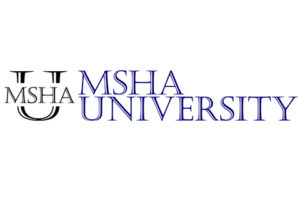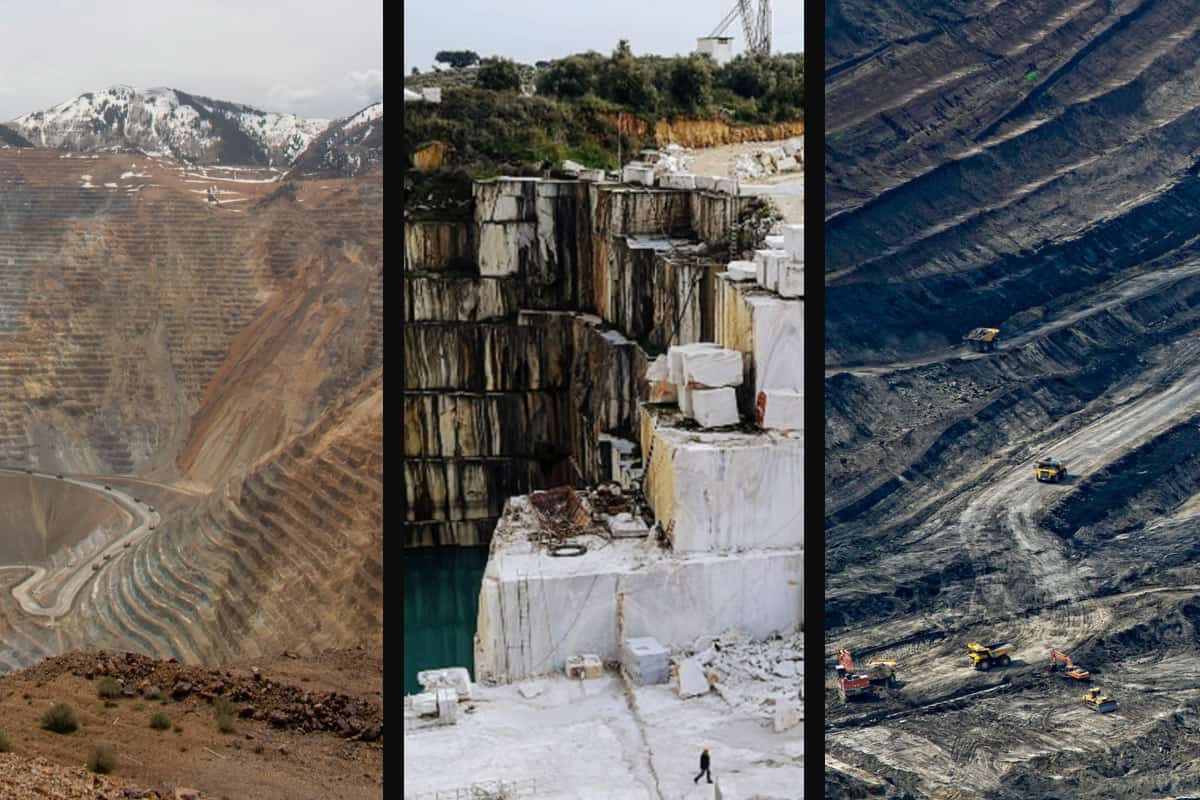With over 12,000 active surface mining operations in the U.S., surface mines outnumber underground mines by more than 23 times! While that’s a staggeringly disproportionate number of surface mines, it makes economic sense. It usually costs much less to access minerals or other mined commodities at the earth’s surface than to dig deep underground.
So, what are the most common surface mining methods? The 3 most common surface mining methods are:
- Open-pit mining
- Quarry mining
- Strip mining
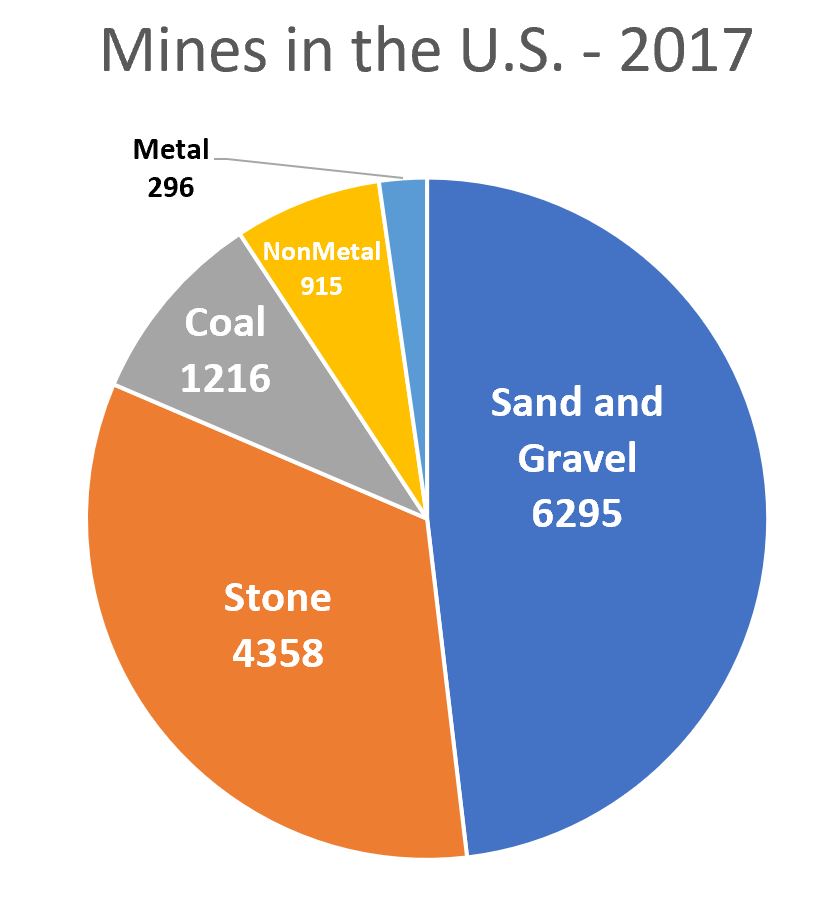
Surface mining in some form has been practiced for thousands of years. Every one of the 2.3 million limestone and granite blocks used to build the Great Pyramid in Egypt was systematically cut and transported from quarries miles away. And today, the surface mining of sand and gravel (aggregates) from open pits provides the raw materials for the most commonly used building material in the world, concrete. So, while the coal-dust-covered miner with the hardhat light comes to mind when we hear the word, “mining,” surface mining is by far the oldest and most common method in use today.
1 – Open-Pit Mining
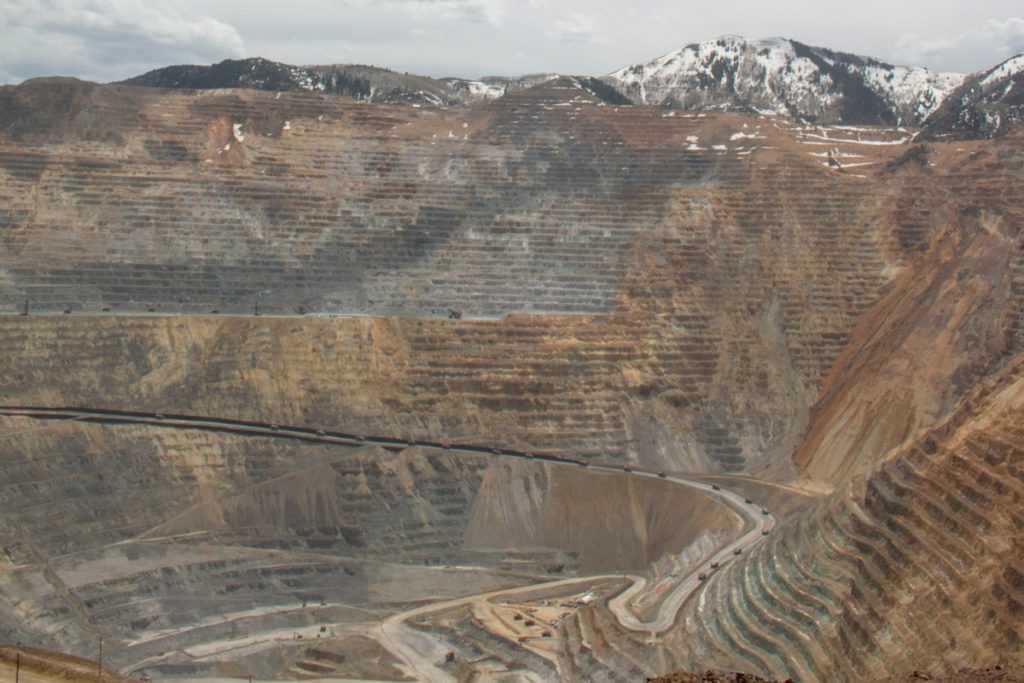
Commodity – 48% of U.S. mines – Sand & Gravel
Regulations – Governed by 30 CFR Part 46 (Surface, non-metal / non-coal)
Open-pit, sometimes referred to as “open cast,” mining is a method used to extract unconsolidated (or loose) minerals, stone, sand, and gravel from deposits that lay close to the earth’s surface.
Extensive geologic surveys and tests are performed to locate and determine the depth, volume, and composition of the deposit.
When it’s determined that mining the deposit will be economically viable, the layer of soil and vegetations, or “overburden,” is removed to expose and provide access to the material to be mined.
A deep pit with high, sloping walls is systematically planned and engineered to allow excavation equipment to extract the deposit and transport it to a processing facility, which is typically collocated on-site. At as sand and gravel pit, for example, extraction is commonly performed by a front end loader (loader) that removes material from the base of an exposed wall of the pit. The loader then either fills haul trucks or feeds a belt conveyor to transport the material over long distances to the processing plant.
The processing plant typically washes, separates, crushes, and sorts the sand and gravel into varying sizes, depositing each into separate piles.
It’s also common for a cement plant to be collocated on-site to mix the sand and gravel to meet precise requirements for concrete orders to be delivered to local construction sites.
TIP! – Go to our Resources page for a link to the CDC Mining Statistics page.
2 – Quarry Mining
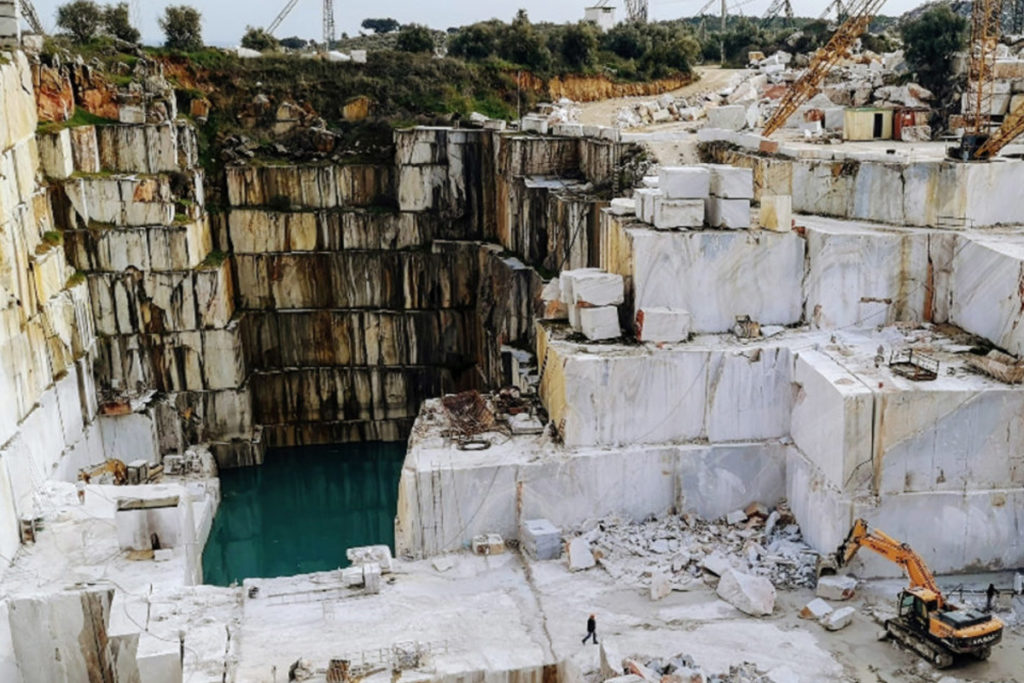
Commodity – 33% of U.S. mines – Stone
Regulations – Governed by 30 CFR Part 46 (Surface, non-metal / non-coal)
Quarry mining is similar to open-pit mining in many ways. The primary differences are due to the type of material that is mined in a quarry, often categorized as “dimension stone.” Instead of sloped walls like an open-pit sand and gravel mine, a quarry will tend to have vertical or near vertical walls of solid stone.
Quarry mining of consolidated dimension stone may employ drilling, blasting, and cutting methods to remove massive blocks of material, such as marble, granite, and limestone. In fact, with the exception of diamond-surfaced cutting equipment, many of the techniques used to split and separate the stone material from the earth remain unchanged from thousands of years ago. But today, powerful cranes and derricks remove the raw stone blocks for transport to on-site processing.
The massive blocks are further processed and cut into smaller blocks or slabs and polished to fine finishes. The output of quarries commonly produce material for kitchen countertops, commercial building surfaces, monuments, and cemetery headstones.
Stone pieces and remnants may be crushed to specific sizes to be used as a range of building materials or even pulverized to a powder for a multitude of industrial and food products.
TIP! – Go to our Resources page for a link to the CDC Mining Statistics page.
3 – Strip Mining
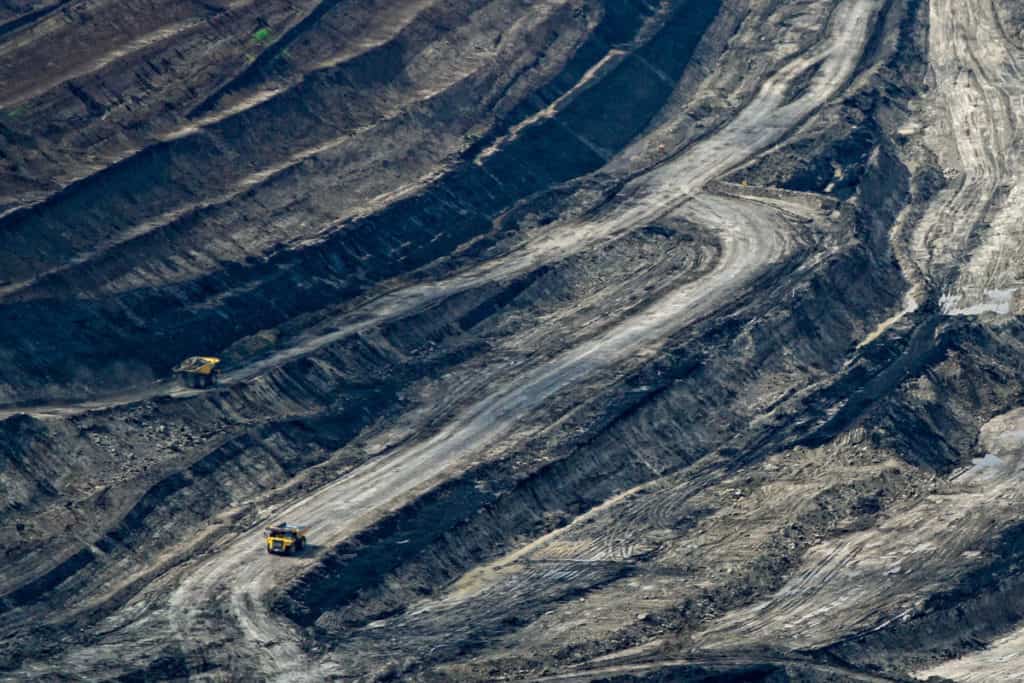
Commodity – 9% of U.S. mines – Coal
Regulations – Governed by 30 CFR Part 48 (Underground – metal / coal)
Strip mining is a method of extracting a seam of material, commonly coal and lignite, that lies relatively close to the earth’s surface. Like open-pit mining, extensive work is done to locate and evaluate the economic value of the seam.
Depending upon the size of the operation, overburden may be initially dislodged by blasting large sections above the seam. The material is then removed by dragline or front end loaders to access the coal.
When the overburden material is removed, the coal seam can be accessed and excavated by enormous power shovels, large machines equipped with a huge “bucket” to dig and load material into massive haul trucks and overland conveyors for transport to preparation plants.
This process employing drag lines and power shovels to strip overburden along a bench above the seam to access and excavate the material goes on continuously until the seam is exhausted.
When the seam has been complete excavated, the overburden is replaced and the mine area goes through a reclamation phase that included filling, grading, and replanting vegetation.
TIP! – Go to our Resources page for a link to the CDC Mining Statistics page.
Related Questions
What are the Pros and Cons of Surface Mining?
Surface mining remains a controversial subject with very strong and divisive opinions on both sides.
Pros
- Less environmental impact than underground mining
- More economical and efficient than underground mining
- Can be located close to areas where mined material is used
- Use environmental reclamation methods when mined material is exhausted
Cons
- Requires the removal of large areas of vegetation, forest, and habitat
- Can contribute to erosion and ground instability for neighboring property
- Can lead to water source contamination
- Can take many years for environment to recover after reclamation efforts
Why is SMCRA important?
The Surface Mining Control and Reclamation Act of 1977 (SMCRA) is so important because it fundamentally changed the role of environmental responsibility for mine operators in the U.S. Prior to the passing of SMCRA, many mining operations, specifically coal mines, left massive excavated areas exposed when mining ceased. The results were environmentally disastrous, as one would expect. But SMCRA placed legal responsibility on the mine operator to plan and engineer reclamation efforts as part of the full scope of the mining process.
Now, overseen by the Office of Surface Mining Reclamation and Enforcement (OSMRE), SMCRA’s primary purpose is to “strike the balance between protection of the environment and agricultural productivity and the Nation’s need for coal as a source of energy.”
While SMCRA continues to have a significant effect on the environmental impact of mining across the U.S., enforcement commensurate with the scale of mining operations remains a challenge.
